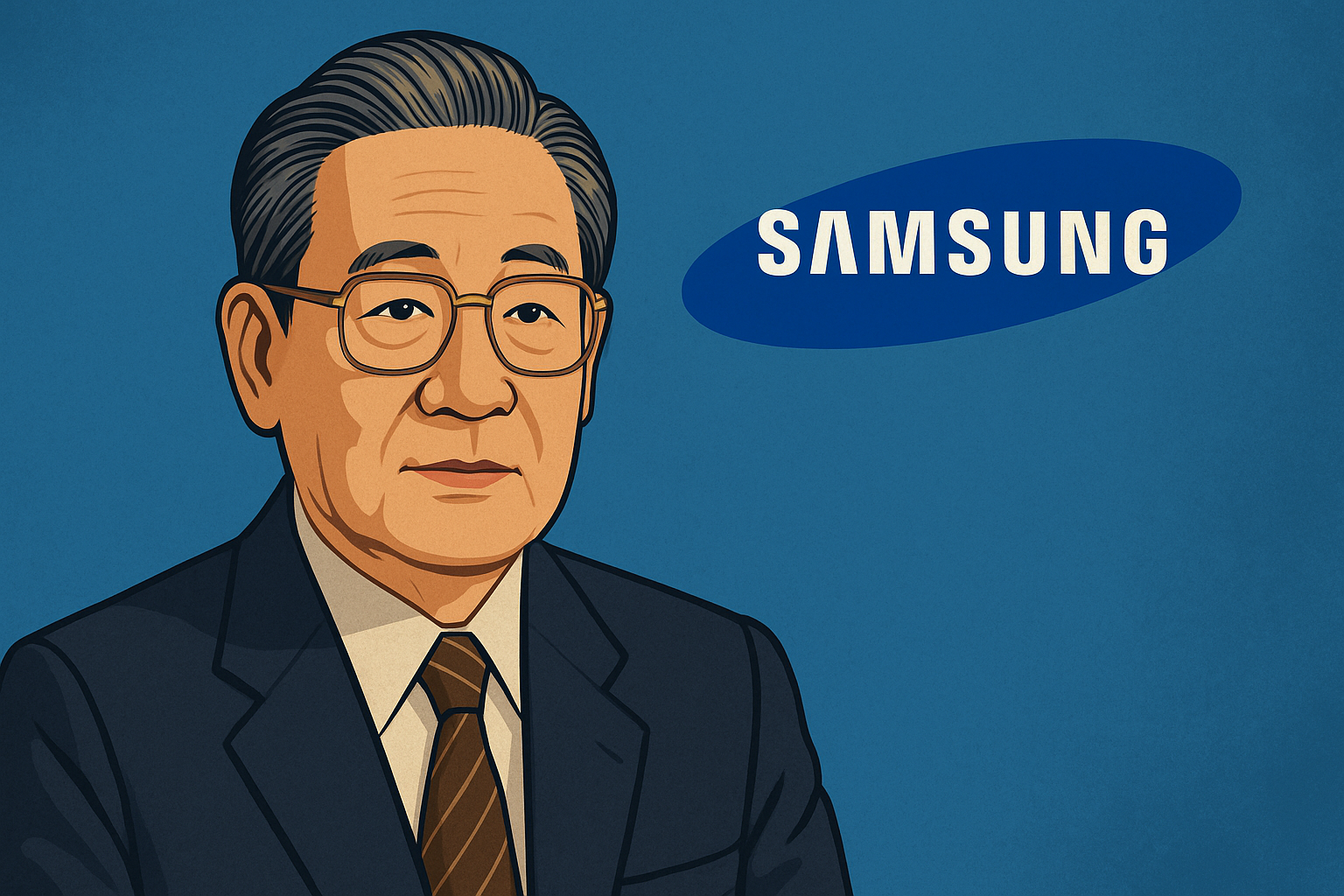From a grocery trader in Daegu to the mastermind behind one of the world’s largest tech giants, Lee Byung-chul didn’t just build Samsung—he helped build modern South Korea. His life’s journey mirrors Korea’s transformation from colonized and war-ravaged to a global economic powerhouse. This is the story of a man whose vision, discipline, and obsession with excellence turned a humble trading company into a $365 billion empire.
1. Early Life: Privilege, Japan, and the Seeds of Vision
Born on February 12, 1910, in rural Uiryeong, Lee came from a wealthy landowning family—an anomaly in colonial Korea. This privilege allowed him to pursue higher education at Waseda University in Tokyo, where he studied economics.
Key Influence: Japan’s industrial strength deeply impressed Lee. He was fascinated by factory systems, assembly-line efficiency, and disciplined corporate culture.
But fate intervened. In 1932, Lee’s father passed away, forcing him to abandon his degree and return home. The personal loss became a professional turning point—it lit a fire under Lee’s already restless ambition.
Takeaway: Japan’s industrial boom showed Lee that scale + efficiency = prosperity. This would become Samsung’s blueprint.
2. Founding Samsung: From Dried Fish to Sugar Empires (1938–1953)
In 1938, Lee founded Samsung Sanghoe—which means “Three Stars”—with a startup capital of 30,000 won (about $27 today) and just 40 employees. Initially, it was a grocery trading company, dealing in dried fish, noodles, and vegetables.
Wartime Survival
-
Under Japanese Occupation (1910–1945): Lee was forced to supply rice to the imperial army but quietly stockpiled goods for locals—an early sign of business acumen and social foresight.
-
During the Korean War (1950–1953): As North Korean forces advanced, Lee fled to Busan with company ledgers sewn into his coat. From a refugee zone, he restarted Samsung by trading surplus U.S. army supplies like blankets and penicillin.
The Sugar Pivot
In 1953, Lee made a game-changing move—he opened Cheil Sugar, South Korea’s first sugar refinery. With sugar rationed and in high demand, it was a massive hit. Profits were quickly funneled into other industries—textiles, insurance, and construction—laying the groundwork for Samsung to become a chaebol (Korean family conglomerate).
3. Industrialization & Electronics Gamble (1960s–1980s)
South Korea’s leader, President Park Chung-hee, launched an aggressive push toward industrialization. Lee Byung-chul emerged as his most trusted capitalist partner. The unspoken deal? The government provided loans and protection; Samsung built export-ready industries.
Electronics Bold Move
-
In 1969, Lee founded Samsung Electronics. Critics scoffed—why challenge Japanese giants like Sony?
-
Lee doubled down. He imported 50 Japanese engineers and promised:
“In 10 years, we’ll make Sony beg for mercy.”
When the first batch of TVs had defects, Lee made a now-legendary move: he had 20,000 units burned in a public bonfire, worth over $3 million.
Lesson: “Excellence or nothing.” Lee turned perfectionism into company doctrine.
4. Semiconductor Revolution: Betting the House
The boldest bet came in 1983, when Lee invested $100 million—a sum close to Samsung’s total assets—into semiconductors. His own board thought it was suicide. But Lee was convinced chips were the future.
-
By 1992, Samsung became the world’s No. 1 memory chip maker, dethroning Japanese dominance.
This move would define Samsung’s role as a global tech superpower—eventually producing 1 in 5 smartphones worldwide and becoming a central player in AI, displays, and hardware.
5. Leadership Style: Discipline, Fear, and Vision
Lee’s leadership was a mix of Confucian paternalism and ruthless perfectionism:
-
7 AM Inspections: He’d visit factories at dawn, slapping dust off machines with white gloves. Managers panicked. Standards soared.
-
Family Loyalty with Limits: He groomed his son, Lee Kun-hee, as successor—but exiled relatives who underperformed.
-
Global Before It Was Cool: In 1977, Lee sent engineers to RCA labs in New Jersey and told them:
“Steal every secret. Master color TVs or don’t come back.”
6. Legacy: The Man Behind Korea’s Miracle
When Lee Byung-chul died in 1987, Samsung accounted for 17% of South Korea’s exports. Today, Samsung Electronics alone generates over $200 billion annually, more than Microsoft or Google.
Lee’s enduring principles include:
-
Vertical Integration: Samsung builds its own chips, screens, and software.
-
Education as Power: Samsung’s elite training centers produce 5,000 engineers annually in cutting-edge tech.
-
National Service Mindset:
“We will repay Korea’s debt with technology.” — Lee Byung-chul, 1973
Conclusion: From Village Boy to Tech Titan
Lee Byung-chul’s life wasn’t just about business—it was about nation-building. He took a post-colonial country and built a company that would become its face to the world. Vision, grit, and an unyielding demand for excellence made him one of Asia’s most influential business leaders.
Samsung’s story is Korea’s story—and Lee was its author.


Pingback: Get to Know - Ratan Tata